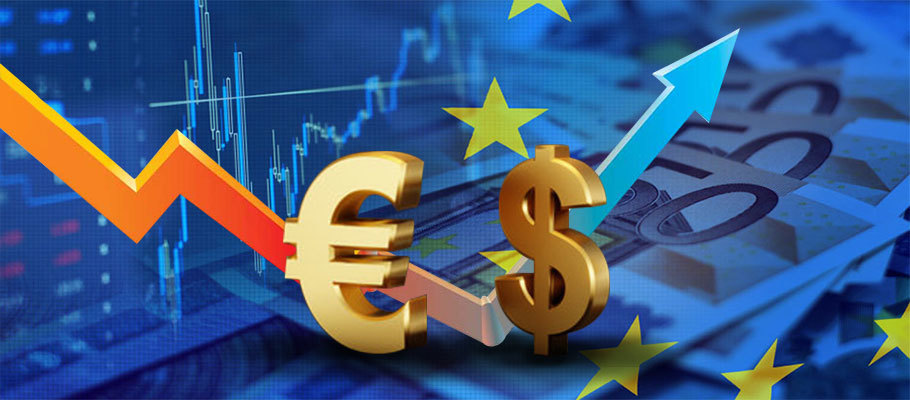
Published: August 2nd, 2021
The euro-to-dollar exchange rate hit July highs on Thursday July 29, 2021. It was on the road to reclaiming 1.18 in the final session of the month, after Eurostat statistics pointed to a Eurozone economy fully on the rebound, defying downbeat forecasts from earlier in the year.
The Eurozone grew at a quarter-on-quarter rate of 2 per cent in the three months up to the end of June, beating the 1.5 per cent consensus increase most economists were looking for.
That turned back the minus 0.3 per cent contraction seen in the opening months of 2021 when, as in other parts of the globe, Europe was under to economically damaging commercial restrictions and strict limits on travel and social contact.
ING’s Eurozone Analysis Unit said in a note to investors on Friday that despite the delta variant’s spread and supply chain concern potentially dimming the outlook, ‘we do expect the rebound to sustain the current pace in Q3.’
‘The eurozone often runs like a diesel engine: it takes time to reach pace, but once there, it tends to hum along reliably for the long journey.’
Eurostat also said in a separate announcement on Friday that unemployment in the bloc was 7.6 per cent at quarter-end, less than the upwardly-revised 7.8 per cent forecast and under the 7.88 per cent expected for the month of June.
Inflation rose above 2 per cent for the first time since October 2018, slightly above the symmetric 2 per cent target set by the European Central Bank (ECB), which had raised it from 1.9 previously on ongoing COVID-19 concerns.
However, core inflation was significantly under forecast after holding firm at around 0.7 per cent in Q2. Analysts at ING think any inflation pressure is therefore driven by volatility in energy prices and price changes in ‘sin tax’ items like alcohol and tobacco, which the core measure doesn’t account for.
Economists at Commerzbank told The Financial Times that growth rates in Europe differ substantially from country to country. ‘This is due to different timings for easing COVID-19 restrictions and the relative persistence of the previous slump.’
The Euro-to-Dollar rate was already pushing forward when Eurostat released its quarterly numbers, as many of the bloc’s individual numbers released their figures earlier in the AM trading session.
The single currency touched above the 1.19 level to trade at volumes not seen since the latter part of June.
Forex strategists at Deutsche Bank in Frankfurt told Reuters that the normal portfolio rebalancing happening at month-end led to flows of modest EUR buying against the greenback. ‘Solid economic numbers out of the Eurozone has likely offered a level of support.
The euro-dollar rate was also one of the earliest beneficiaries at mid-week when US Federal Reserve Chairman Jerome Powell said in a press conference that analysts, economists, and financial markets might have been over-optimistic when they expected that the world’s leading central bank was getting ready to reveal in early September its yet-to-be formalised plans to complete the Fed’s monthly USD 120 billion quantitative easing programme.
After speaking to journalists following Wednesday’s announcement, Powell’s comments seemed to trigger a surge in dollar selling which had kept on running into the last session of the week. That comment-driven momentum might also have been giving an added push to the euro-dollar rate after Friday’s Eurozone statistics were formally released.
The G10 majors last week saw two significant fallers in the Norwegian Krone and New Zealand Dollar, both having outperformed recently. Their rapid losses in last week’s session may help to explain EUR/USD’s quick elevation last week amid the combustion in global markets generally.
Rabobank’s forex strategy unit said in a note to investors that ‘it (was) all about China again.’
‘What we’re seeing in some indicators is only the start of what we might potentially see repeated in many others still being assessed. A sell-off in Chinese equities was triggered by Beijing’s crackdown on education technology, which followed a previous set of restrictions on fintech companies.’
The Chines government, Rabobank analysts say, is attempting to reign in speculation in markets it thinks are overheating, like property and food delivery. Delivery company Meituan, for example, saw its stock price stock tumble by 15 per cent after Beijing regulators told the firm to ensure all of its drivers were being paid the minimum wage.
Back in the Eurozone, low interest rates were helping make the Euro an attractive ‘funding currency’ for forex traders looking to bet on gains in value for other third currencies. That strategy has another side in that it tends to support currencies with lower interest rates like the Euro, Yen, and Swiss Franc during periods of price volatility.
Using the euro currency for funding trades means it's borrowed and sold in for greenbacks before the dollars are exchanged for the target currency at the other end of the trade. Its utility as a funding currency is one reason why the Euro often falls short of movements by currencies like the krone and New Zealand dollar when global markets are hotting up, and investors see more opportunity in risk.
Economists at Capital Economics told Bloomberg that the falls seen in NZD and NOK ‘have pulled benchmark indices in Hong Kong and China 15 per cent under the highs seen in February.’
‘That’s led to some pessimism about China’s equities market. Previously we argued that having successfully got through the opening months of the pandemic on a better footing than any other big market, China’s economy would start to lose steam, with policy support being taken away and the spike we saw in export demand dissipating as consumption patterns in the rest of the world began to stabilise.’